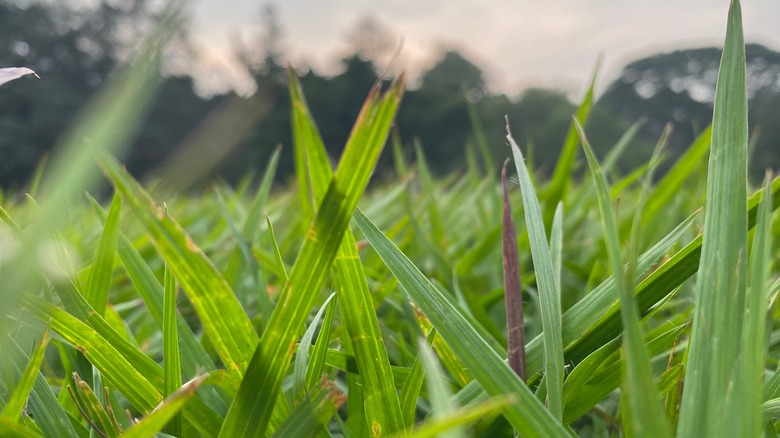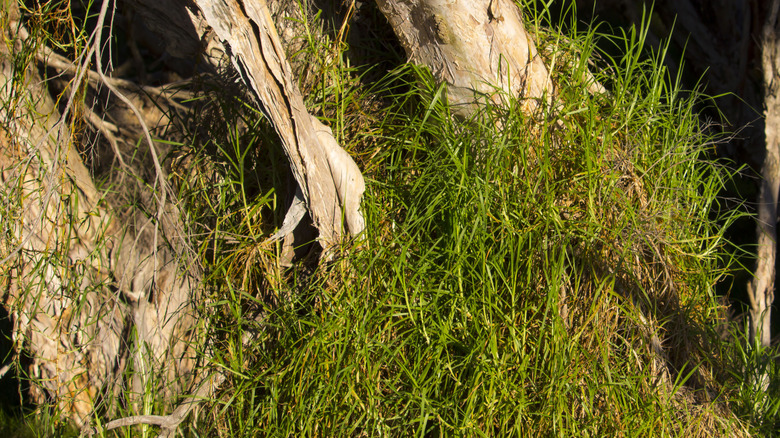What To Know Before Growing Durable, Tropical Kikuyu Grass In Your Yard
We may receive a commission on purchases made from links.
Drought- and heat-tolerant, disease-resistant, and extremely resilient: what's not to love? Kikuyu grass (Pennisetum clandestinum) boasts all these traits and more. It sounds ideal as a turf grass, and it is pretty close to ideal; it's inexpensive, fast-growing, and perfect for stabilizing eroded ground quickly. It also is lovely as an ornamental grass, reaching heights of about 18 inches. Kikuyu even bounces back beautifully after cold snaps. And perhaps the biggest selling point of this grass is its lovely light-green color and lush growth habits.
So, what's the catch? It all comes down to one word: invasive. This mighty grass can quickly take over your entire yard if you don't keep it in check. Kikuyu grass may be a great fit for your space, but you've got to manage it well to keep it from becoming unruly.
Due to these winning characteristics, kikuyu thrives in Texas, Southern California, Central America, South Australia, and other areas with hot, dry summers and mild winters. If you live in a region like this and it's time for a new lawn rather than a quick fix, this may be the grass for you. Just be ready to take the right steps to keep its growth under control.
Eyebrow-raising issues with kikuyu
Some disadvantages of this prolific plant are that it's often viewed as a weed. It spreads by seeds and rhizomes for double the multiplying power. Kikuyu grass is low-maintenance in many of the ways we want a lawn to be. However, kikuyu lawns need to be mown frequently, and its coarse texture can make this task challenging. Unfortunately, mowing kikuyu also stimulates flowering. Since the grass spreads partially by seeds, it's crucial to keep up with trimming if you want to stay on speaking terms with your neighbors. Even then, the rhizomes can make their way to nearby properties.
Other than conventional herbicides, what typically are the easiest ways to kill grass might not be tough enough opponents for kikuyu. If it makes its way from your lush lawn into unwanted spots, a reliable way to stop it in its tracks is glyphosate. This potent product kills all grasses, so you'll need to apply it carefully only on the kikuyu you're targeting. This popular weed killer is controversial with well-earned reason. We suggest using this powerful agent only as a very last resort, if at all.
Properly managing kikuyu grass
How fast it grows in your yard will depend on the conditions specific to your area, although it's recommended that you trim it to about 1½ inches tall. Kikuyu poses more challenges if you're growing it only as an ornamental plant. Keeping it from spreading is the best way to handle eagerly growing kikuyu grass. It's very difficult to remove by hand.
If it's beginning to encroach on or pop up in an unwanted area, you can apply a selective herbicide over your turf to kill off only the kikuyu. Australian company Paul Munn Instant Lawns suggests using Monument Liquid, available at Amazon. However, they caution that this expensive herbicide is best applied by professionals. If you're hoping to keep your yard free of harsh chemicals, kikuyu may not be the wisest choice as an ornamental grass, or even as turf.


